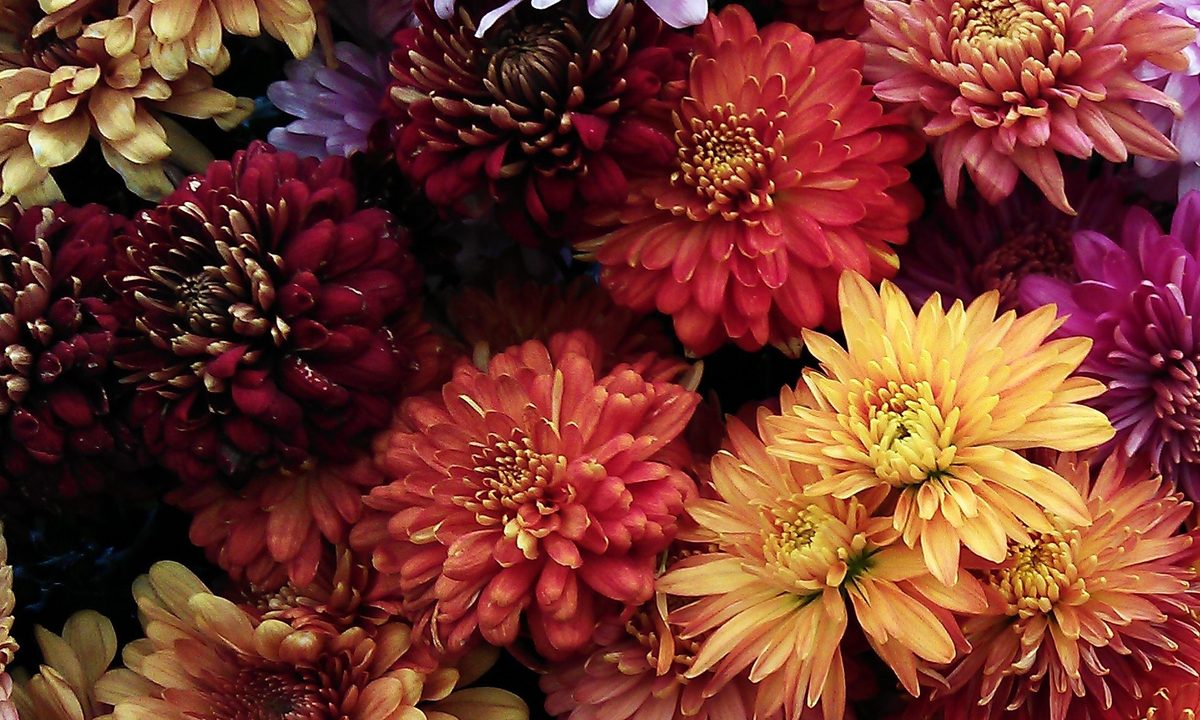Spring and summer receive most of the attention when it comes to beautiful flowers, but there are many wonderful flowers that bloom in fall, too! From reds and golds that match your trees’ leaves to softer blues and purples, there are so many options to choose from. No matter the climate you live in or the colors you prefer, there are plants that will look great in your autumn garden. These 12 fall flowers can satisfy any gardener, whether you’re looking to fill a full flower bed or just one or two containers to spruce up your porch. Here are our favorite flowers to bring the colors of fall to your home or garden.
Celosia
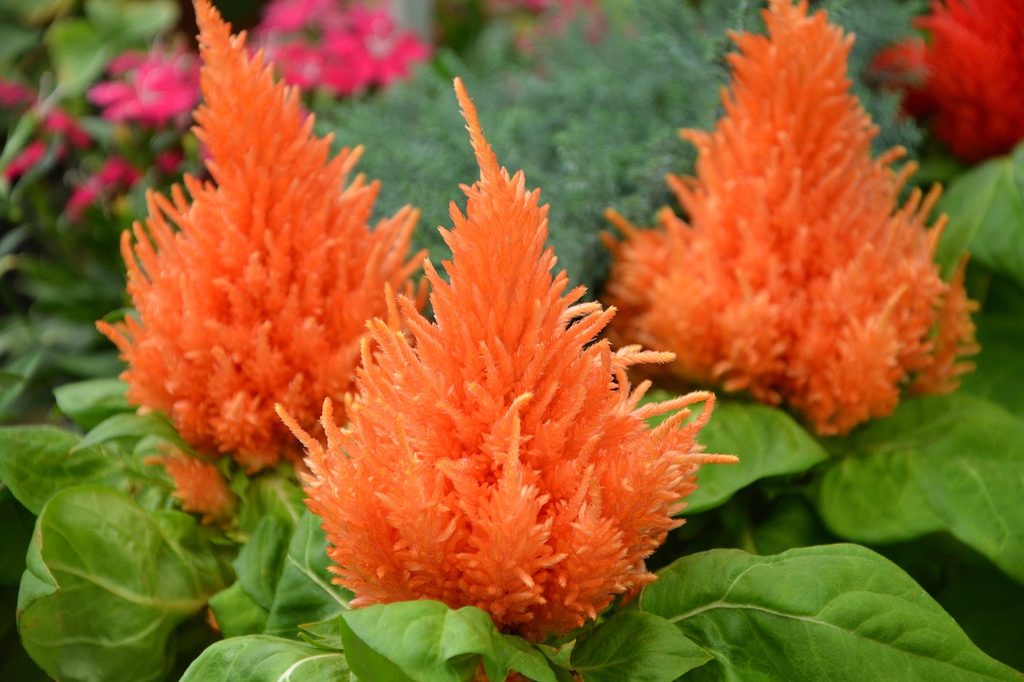
Celosia, also sometimes called cock’s comb or wool flowers, are sure to stand out in any garden. These unique flowers come in shades of pink, orange, red, yellow, and purple. They can be shaped like fox tails (triangular and bushy) or like coral, wide and wavy. They grow easily in containers or gardens. Celosia are low-maintenance flowers. They enjoy full sun, although they will tolerate some shade, and do best in well-draining soil. Celosia won’t tolerate standing water or wet feet, so let the soil dry between waterings.
Marigold
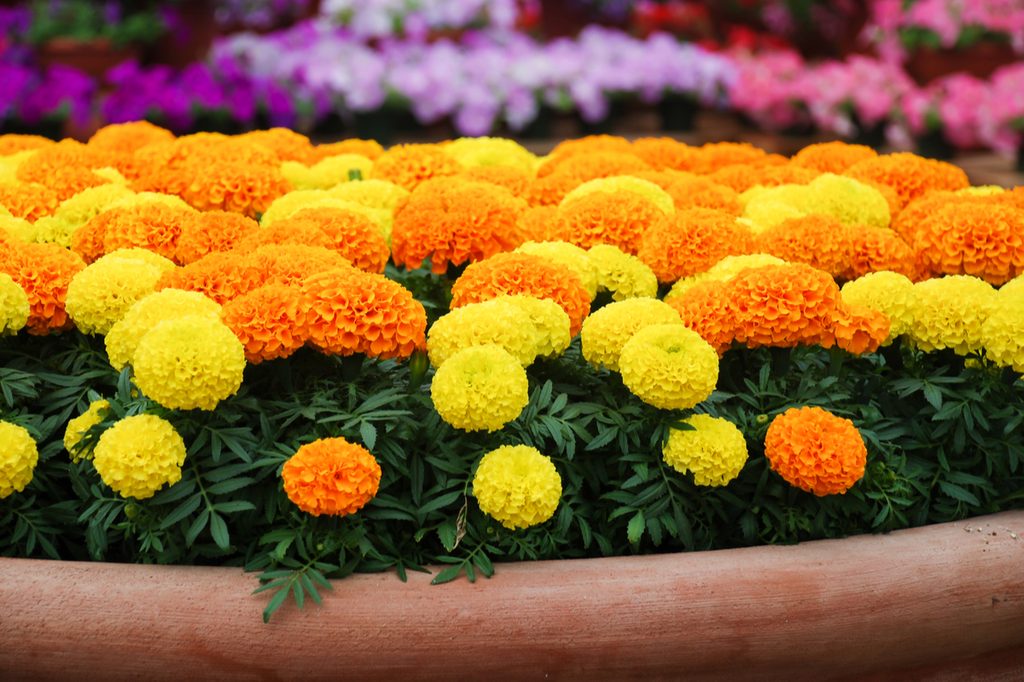
Marigold is a garden classic, with flowers that bloom in a range of rich golds and reds. They come in a variety of sizes as well, from the tiny and cute French marigolds to the large and impressive Aztec marigolds. Plant your marigolds somewhere they’ll be sure to get plenty of sun. Water them thoroughly, but allow the soil to dry between waterings. Although it can be tempting to fertilize your marigolds, this actually results in more leaves and fewer flowers.
Lobelia
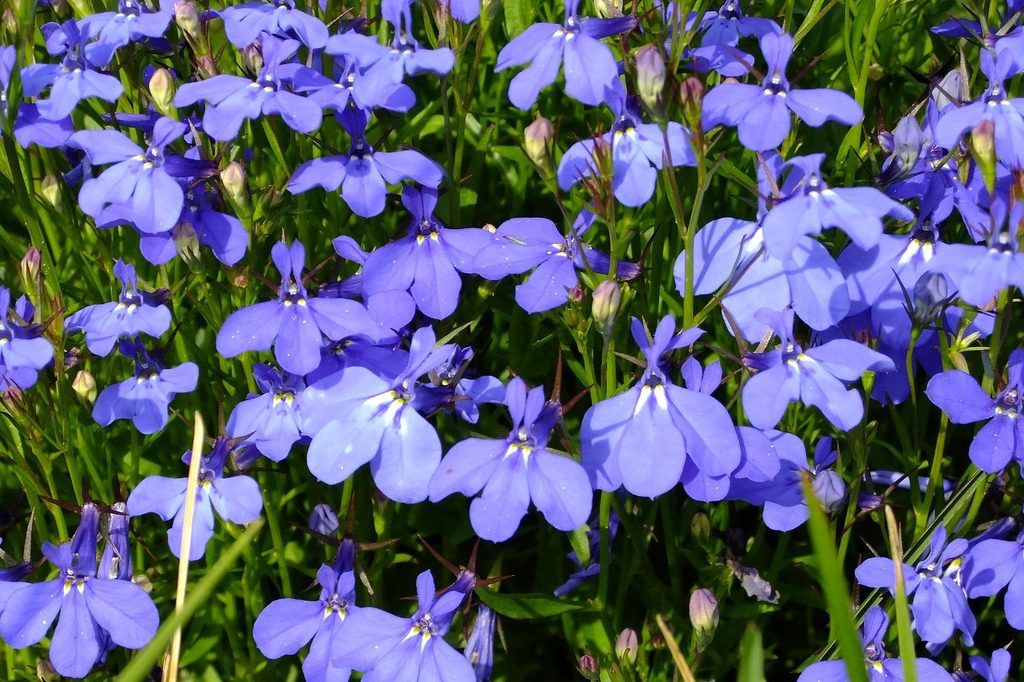
Lobelia is an herb with stunning blue or red flowers. There are many short varieties perfect for containers or borders, and even a few tall varieties that make excellent centerpieces. Lobelias are very easy to care for, preferring full sun and rich, moist soil. In hotter climates, they may need more frequent watering.
Love-in-a-mist

Love-in-a-mist, or nigella, is a plant with unique, feathery leaves and lovely flowers in shades of blue, pink, and white. Planting a cluster of these flowers together can give you the mist effect they’re named for, as the thin, branching leaves overlap each other. Love-in-a-mist aren’t picky plants; they only need a sunny place with rich, well-draining soil to grow and thrive. For early spring blooms, nigella can be planted in fall. For blossoms that last through summer into fall, plant your nigella in the spring.
Rose
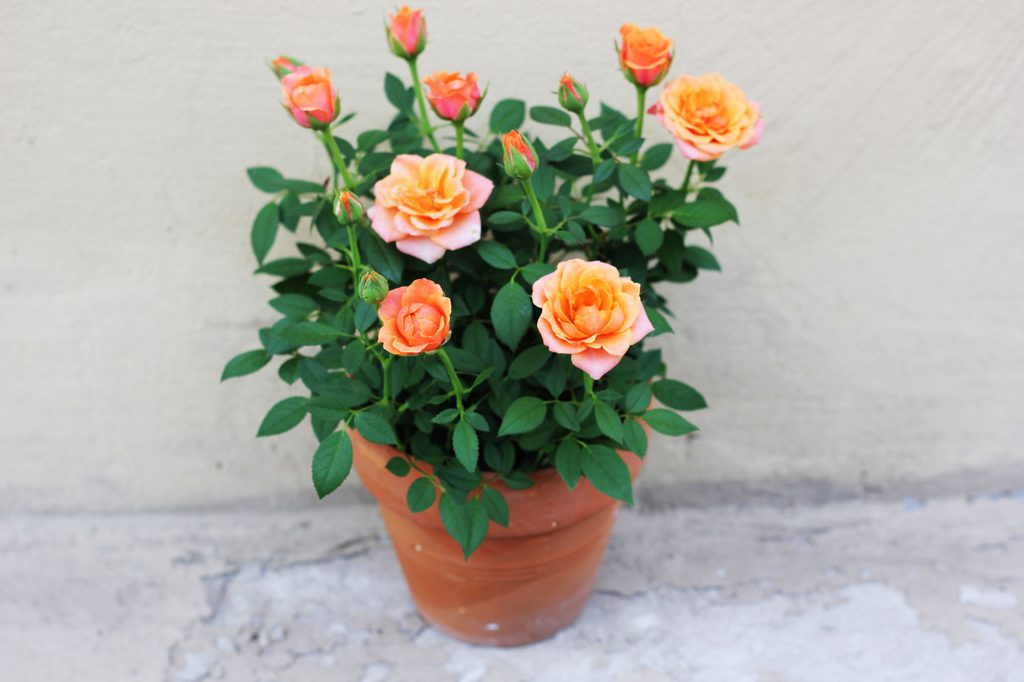
Roses come in almost every color and shade, with bloom times ranging from early spring to late summer and fall. The secret to successful rose care lies in the planting location. Roses need full sun, or mostly sun with afternoon shade in the hottest climates. They’re also pickier about soil type than other flowers, requiring rich, loamy, slightly acidic soil that drains well. Rose-specific fertilizers can also help.
Some of the best varieties for fall roses are the yellow blooms of Arthur Bell roses, the soft pink Queen Elizabeth rose, and Crystal Fairy, a smaller, more delicate-looking white rose. Hybrid Tea roses also tend to bloom in the fall, and there are countless colors available, from the velvety red Mister Lincoln to the sunrise-colored Lady of Shalott.
Pansy
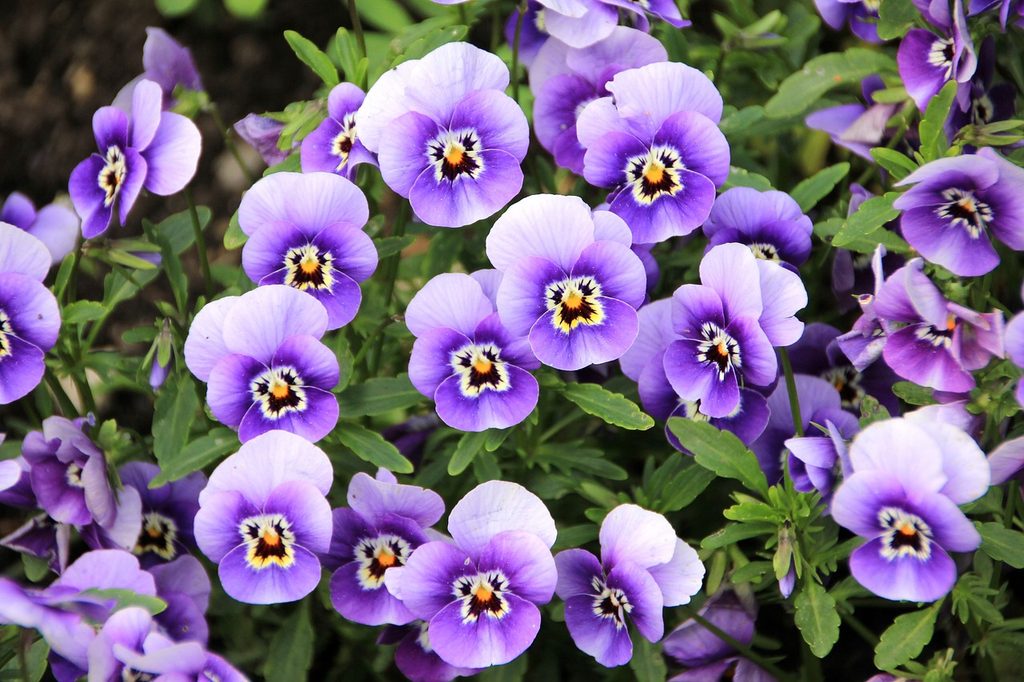
Countless fall flower gardens include pansies, and it’s no wonder why. The contrast of the deep, rich purple and black with the bright yellow that pansies are known for makes these flowers stand out, whether in a container on their own or in a garden with other flowers. Pansies are an especially great choice if you’re looking to attract butterflies to your garden.
Pansies will grow in full sun or partial shade, and they prefer rich, well-draining soil. Pansies can grow in most climates, although they’re more tolerant of the cold than they are of heat. In summer, or in hotter climates in general, give your pansies a little shade to help keep them cool.
Aster
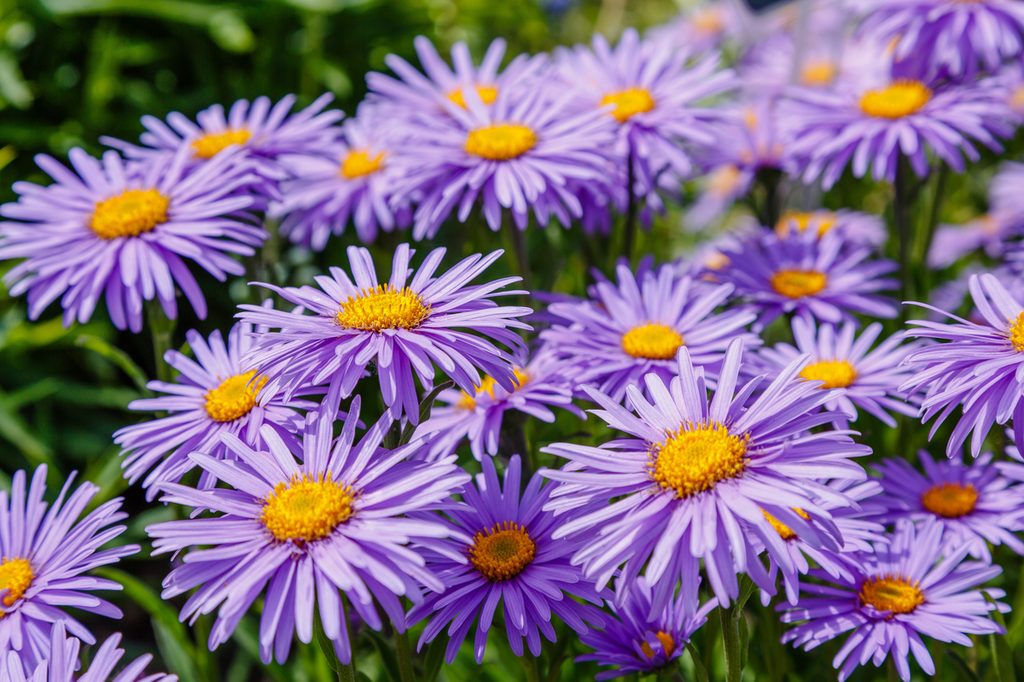
Asters are another fall garden staple. They come in a wide variety of colors, including white, blue, purple, and pink. Asters can be tall or short, with large blooms or tiny flowers, so play around with different varieties to see what best suits your garden. Regardless of the variety you choose, aster care is simple. Plant them in full to partial sun and in rich, well-draining soil. Be careful not to get their leaves wet when you water them, though, as this can lead to powdery mildew.
Heuchera
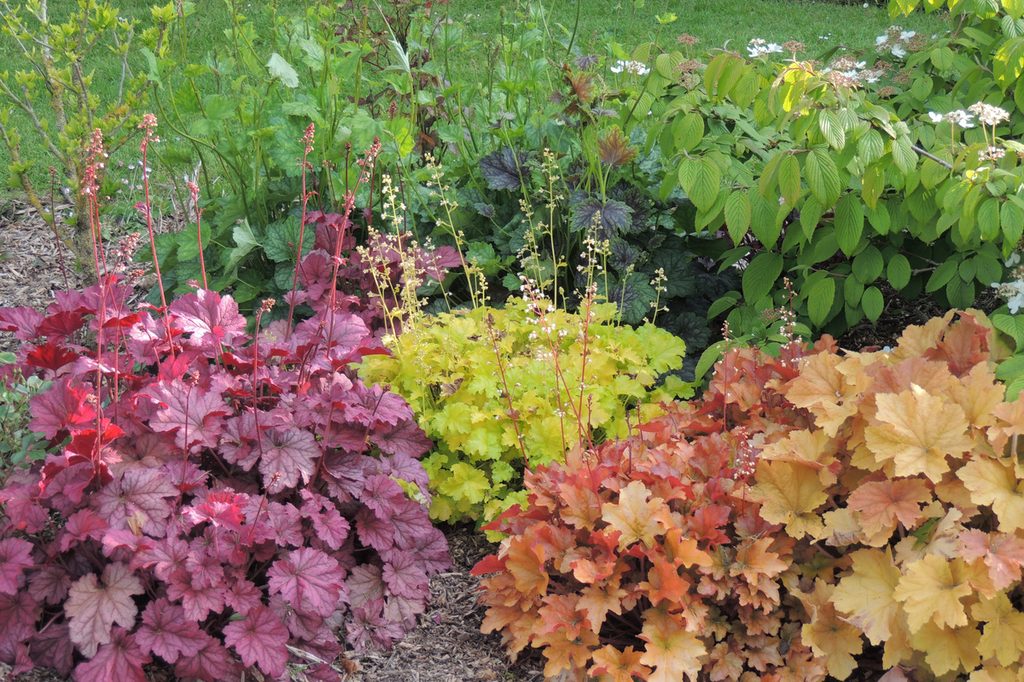
Heuchera, or coral bells, grow lovely flower spikes but gardeners prize them for their colorful leaves. The leaves can range from dark purple to bright orange. Heuchera require very little care; they prefer slightly acidic soil, partial shade, and good drainage. In the fall, you can cut the flower stalks off to help conserve energy. When dried and crushed, the flower stalks produce a lovely sweet smell.
Chrysanthemum
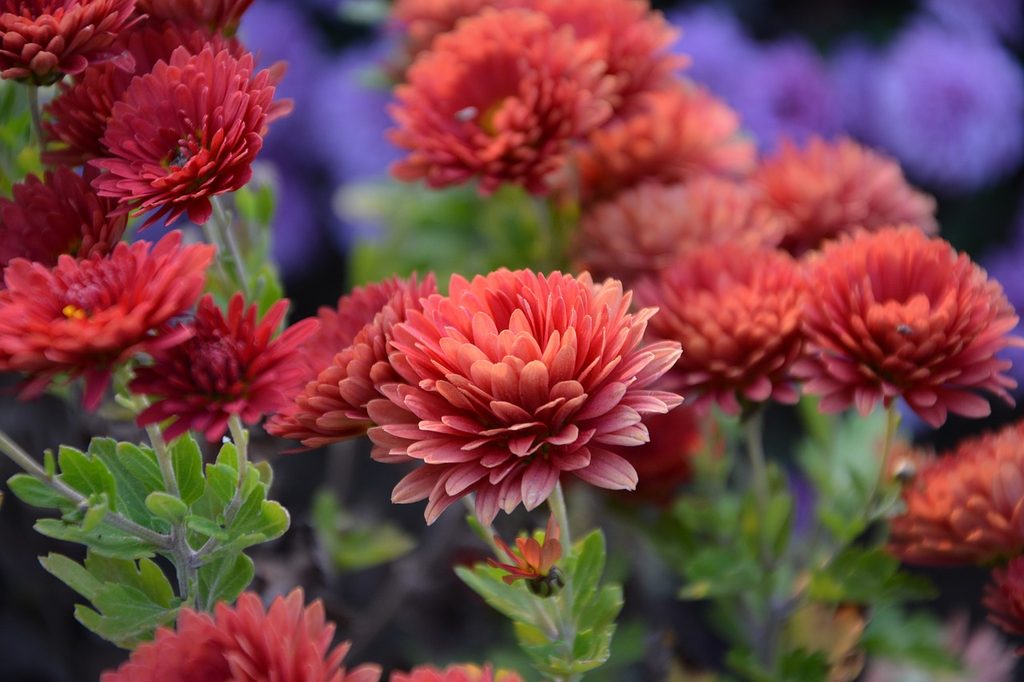
In many regions, potted chrysanthemums (or just “mums” for short) appearing in stores is a sure sign that fall is arriving. They bloom in shades of orange and purple and have beautiful round flowers. For the best blooms, plant your mums in full sun and keep them moist but not soggy. A layer of mulch can help them survive the winter.
Snapdragon
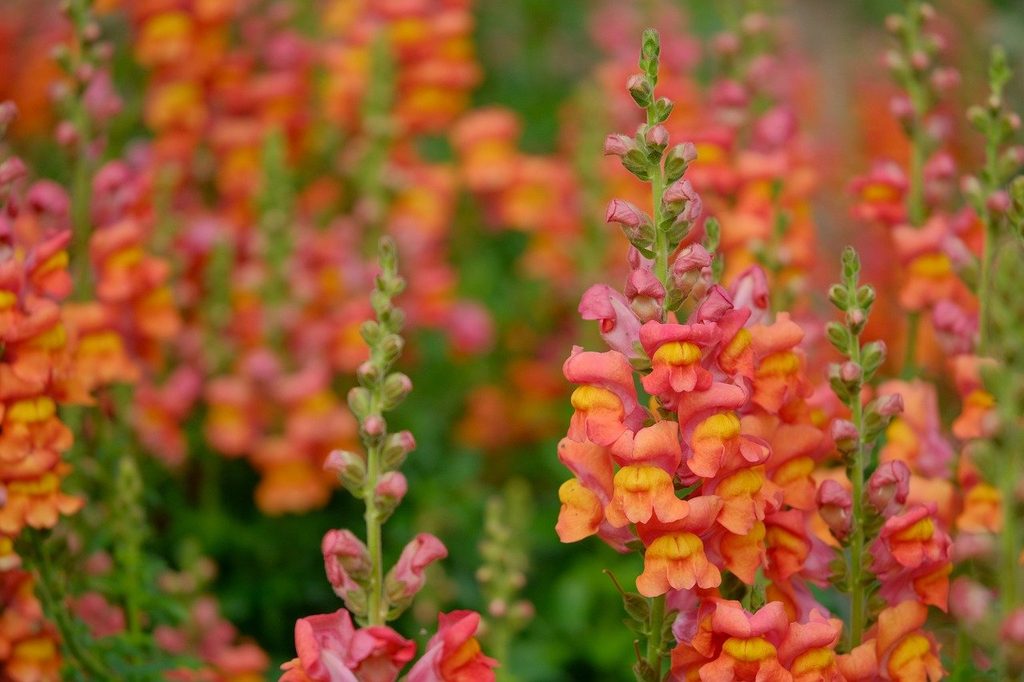
Snapdragons grow beautiful flower spikes that bloom in any number of colors, from reds and oranges to pinks and purples. Snapdragons do best in full sun with rich, well-draining soil. Shorter varieties are perfect for containers, and taller varieties look stunning as walkway borders.
Coneflowers
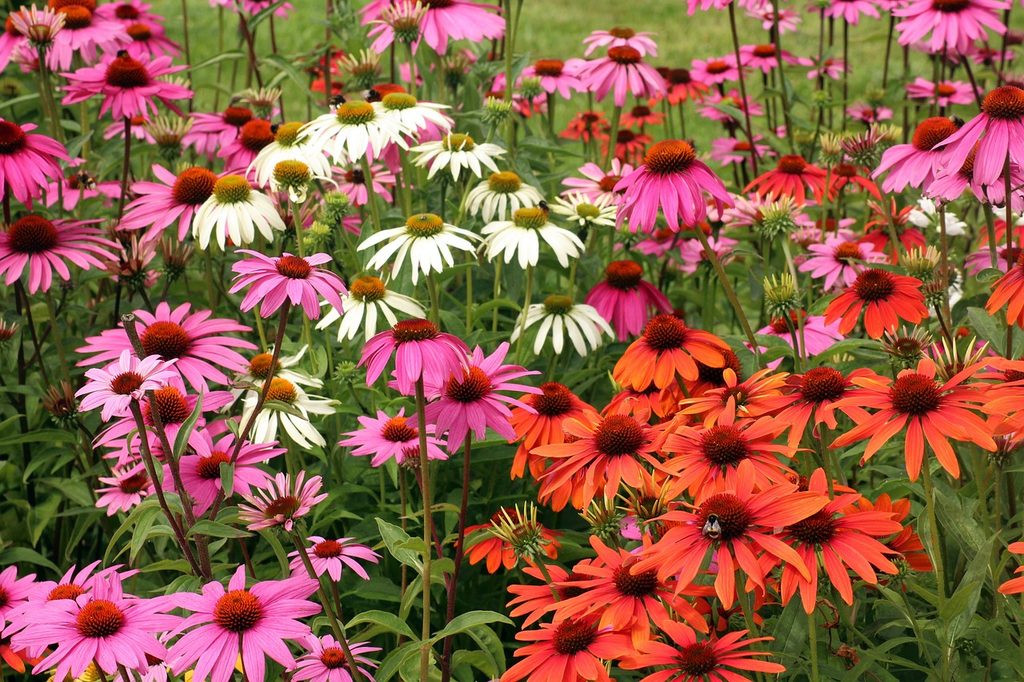
Coneflowers bloom through summer and fall in shades of yellow, pink, orange, red, and purple. Their name comes from the way their petals fold down, creating a unique cone-shaped flower. Native to the eastern and central parts of the US, coneflowers are a big hit with birds as well.
Their seed heads offer both a unique visual for your garden and a food source for your local wildlife. Coneflowers are easy to care for – just plant them in full to partial sun and water them during dry weather. Additionally, they’re easy to find in most nurseries and garden stores, whether you’re looking for mature plants, seedlings, or seeds.
Blanket flowers

Gaillardia, also known as blanket flowers, are gorgeous fall flowers. These relatives of asters are native to the US, and, similarly to coneflowers, they are an excellent food source for local pollinators and wildlife. With large and bright, two-toned (red and yellow) flowers, they make a lovely addition to any fall garden. While blanket flowers are perennial, they often grow as annuals because of their shorter lifespan. However, they will also self-seed, so even if the first plant doesn’t return, you may still see blanket flowers appear in your garden.
From the fiery celosia to the cool love-in-a-mist, any of these eleven flowers would make lovely additions to an autumn garden. Be sure to choose your planting sites carefully, and don’t be afraid to try out all sorts of different combinations of colors and heights. Have fun with your garden, and enjoy the bright colors of every season.
